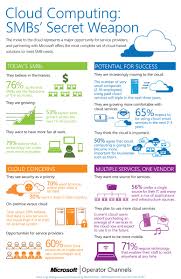The Big Shift to Cloud-Based Security Continuous Security
Cloud Computing, Mobile Endpoints, and IoT, Data Center Infrastructure and Security models have shifted from well-defined perimeters that were protected by firewall appliances, static policies, and monolithic stacks to dynamic, software-defined infrastructure powered by virtualization and containerization
The perimeter is now elastic and can’t be defined or secured by static policies. Host and Endpoint Security has shifted to a distributed model that is driven by dynamic policies, ephemeral machine instances, and immutable infrastructure.
One major component part of Infrastructure hasn’t kept pace with this change, and that is Identity, Access, and Secrets Management for Users, Services, and Machines. The conventional arrangements of passwd, LDAP, and Active Directory need adaptable setting for these new architectures, and as the 2016 research reports appear, an absence of Origin around Identity Credentials is the underlying driver for the larger part of them.
Another challenge for CIOs and Infrastructure leaders is the development and maintenance of “home grown” solutions, that typically solve a tactical challenge, but fall short strategically, and then inevitably lose support over time and become “orphaned”. This approach usually creates more security challenges than solutions .
Big Shift to Cloud-Based Security
According to a previous report enterprises will look for internet performance tools to help manage their transition to the cloud and here are the Four main reasons to why it is so:
Risk Mitigation — While enhancing security in the cloud is a component of risk management, mitigating risk from routine maintenance and human error, latencies or network volatility must be a top priority.
Internet Performance Management (IPM) tools will be essential to allow System Administrators real-time visibility, insight and control into internal and external assets in order to minimize and stay on top of potential risks and threats.
Infrastructure Elasticity Management — IPM tools will be essential for CIOs that will be looking to gather insights on a global level. They will be crucial for optimizing spend (peak cloud rates around the world) but also to optimize performance in terms of controlling load (usage and performance vary with time zones and geography).
Security Enhancement — Security issues become growing nuances as workflows are rapidly transitioning to the cloud and are resting between data centers and external cloud resources. With remote or mobile employees and partners distributed globally cloud security becomes even more critical.
Tools that offer comprehensive monitoring and managing solutions as well as anomaly-alerting features from a single dashboard are tagged as essential for efficient cloud migration.
Repathing Optimization — A large network infrastructure with servers, data centers and interconnected systems is impossible to scan for performance stats without tools that allow for system transparency. It’s why IPM tools will be necessary for System Administrators and other execs.
They will provide visibility into system paths and enable for full optimization procedures in order to ultimately add value across an enterprise global presence.
Read More:- Cloud Computing Security Public vs Private Cloud Computing


Hi! I am a robot. I just upvoted you! I found similar content that readers might be interested in:
http://www.globaldots.com/cloud-security-2016-key-takeaways/